Does RV Generator Charge House Batteries? - Quick Answer...
The answer to this question is YES. An RV generator is a versatile power source that can provide electricity for your RV’s electrical needs AND charge the house batteries.
Discover all you need to know in this revealing article.
Introduction
Question: Does RV Generator Charge House Batteries?
If you’re a proud owner of an RV, you may have wondered, “Does an RV generator have the capability to charge the house batteries?” Well, wonder no more! In this article, we will explore the fascinating world of RV generators and delve into whether or not they have the power to keep your house batteries charged during your adventures on the road. So, sit back, relax, and let’s discover the answer together!
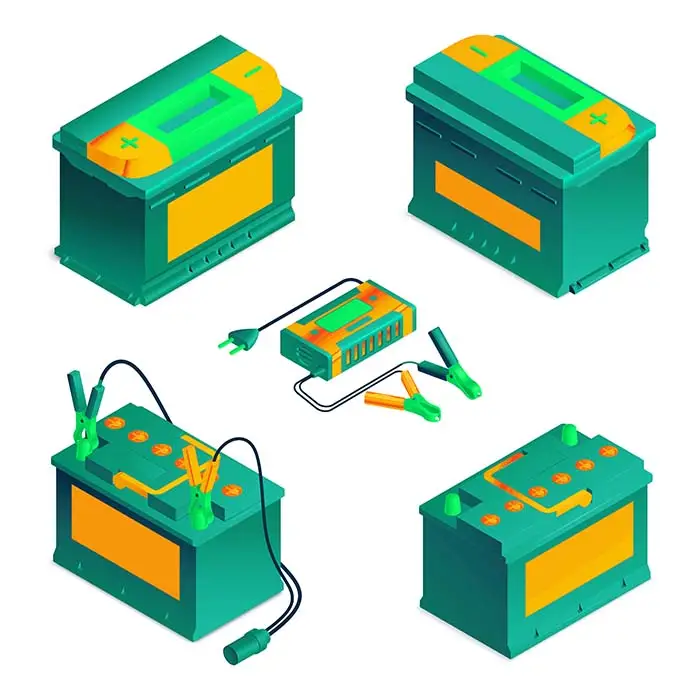
NOTE: We know the way the question “Does RV Generator Charge House Batteries” is really poorly written but it is the way the question is searched for. So as appear as an answer in the SERP’s we have to quote the question as asked. Thanks.
Can an RV Generator Charge House Batteries?
If you own an RV and rely on house batteries to power your onboard appliances and systems, you may be wondering if your RV generator can be used to charge those batteries. The answer is a resounding yes! An RV generator is a versatile power source that can not only provide electricity for your RV’s electrical needs but also charge the house batteries.
Understanding the Role of House Batteries
Before we dive into the specifics of RV generator charging, let’s first understand the role of house batteries in an RV. House batteries, also known as deep cycle batteries, are designed to provide a sustained and reliable source of power for your RV’s electrical system. Unlike automotive batteries, which are designed for short bursts of high-energy output, house batteries are built to deliver a steady supply of power over an extended period.
House batteries are responsible for powering various onboard systems, such as lights, electrical outlets, water pumps, and appliances like refrigerators and microwaves. These batteries are usually charged by the RV’s engine alternator while driving or by an external power source when parked, such as an RV generator.
Benefits of Charging House Batteries with an RV Generator
Charging your house batteries with an RV generator offers several advantages. First and foremost, it allows you to replenish your batteries’ charge even when you are not connected to a campground’s electrical hookup. This means you can still power your RV’s appliances and devices even when you are boondocking or camping in remote locations.
Using an RV generator for battery charging also provides a convenient and efficient way to maintain your battery’s health. Properly charging your house batteries helps extend their lifespan, ensuring that they are always ready to power your RV’s systems when you need them.
Now that we understand the importance of charging house batteries with an RV generator, let’s explore the factors that can affect the charging process.
Factors Affecting RV Generator Charging
Several factors come into play when it comes to RV generator charging. Understanding these factors will help you optimize the charging process and ensure your house batteries receive the necessary power.
Battery Type and Capacity
The type and capacity of your house batteries play a crucial role in determining how well they can be charged by an RV generator. Different battery chemistries, such as lead-acid, lithium-ion, and AGM (Absorbent Glass Mat), have different charging characteristics. It’s essential to consult your battery manufacturer’s guidelines to ensure you are charging them correctly and safely.
Battery capacity, usually rated in amp-hours (Ah), also affects the charging time. The larger the battery capacity, the longer it will take to get fully charged. It’s vital to consider your power needs and select house batteries with an appropriate capacity for your RV usage.
Generator Output and Capacity
The output power and capacity of your RV generator are significant factors in charging your house batteries effectively. Most RV generators have a specific power rating, expressed in watts or kilowatts, which indicates the maximum amount of power they can deliver.
To ensure efficient charging, your generator’s power output should be sufficient to handle the charging needs of your house batteries while also powering other onboard systems. It’s crucial to evaluate your RV’s power requirements and choose a generator that can provide enough power for both charging and running your appliances simultaneously.
Connecting Cables and Wiring
Properly connecting your RV generator to the house batteries is essential for efficient and safe charging. High-quality, heavy-duty cables and connectors are necessary to handle the power transfer without excessive voltage drops or heat build-up.
Ensure that your cables are correctly sized for the generator’s output and the distance between the generator and the batteries. Loose connections or inadequate wiring can lead to voltage losses, inefficient charging, and potential safety hazards. It’s always best to follow the manufacturer’s instructions and consult a professional if you are unsure about the wiring setup.
Charging Modes and Systems
RV generators offer various charging modes and systems to cater to different battery chemistries and charging needs. Understanding these modes and systems can help you optimize the charging process and protect your batteries from overcharging or undercharging.
For example, some generators may have a built-in charger that intelligently adjusts the charging voltage and current according to the battery’s condition. Others may offer multiple charging stages, such as bulk charge, absorption charge, and float charge, to ensure a thorough and safe charging process.
Consult your RV generator’s user manual to familiarize yourself with the available charging modes and systems and select the appropriate settings for your house batteries.
Now that we have covered the factors that affect RV generator charging, let’s move on to choosing the right RV generator for your needs.
Choosing the Right RV Generator
Selecting the right RV generator involves considering various factors, such as your power needs, generator compatibility, and generator capacity. Let’s explore each of these factors in detail.
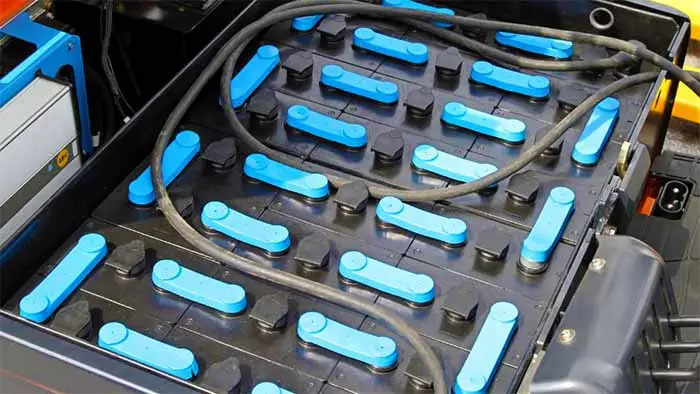
NOTE: We know the way the question “Does RV Generator Charge House Batteries” is really poorly written but it is the way the question is searched for. So as appear as an answer in the SERP’s we have to quote the question as asked. Thanks.
Assessing Power Needs
Before purchasing an RV generator, it’s crucial to assess your power needs accurately. Start by making a list of all the appliances and systems you plan to power with the generator, along with their respective power ratings.
Add up the power ratings to determine the total power requirement. Keep in mind that some appliances may have surge ratings, which require additional power for startup. It’s recommended to choose a generator with a power output that comfortably exceeds your total power requirements to avoid overloading and ensure smooth operation.
Considerations for Generator Compatibility
When selecting an RV generator, it’s essential to consider compatibility with your RV’s electrical system. Check whether the generator is compatible with the voltage and frequency requirements of your RV’s electrical system. Most RVs operate on a 120-volt AC system, but some may have specific requirements.
Additionally, consider the type of fuel the generator uses. RV generators are commonly powered by gasoline, diesel, or propane. Choose a generator that aligns with your fuel preferences and availability.
Choosing the Right Generator Capacity
Generator capacity refers to the amount of power the generator can provide. It’s crucial to choose a generator with a capacity that meets your power needs while leaving some headroom for future expansion or unexpected power demands.
Generator capacities are usually expressed in watts or kilowatts. Higher-capacity generators can provide more power and can handle larger loads, such as air conditioners or multiple appliances running simultaneously. However, they may also be bulkier, heavier, and more fuel-thirsty. Consider your space constraints, weight limits, and fuel efficiency requirements when selecting the generator capacity.
Once you have chosen the right RV generator, it’s time to set it up for charging your house batteries effectively.
Setting Up the RV Generator for Charging
Proper setup of your RV generator is crucial to ensure safe and efficient charging of your house batteries. Let’s walk through the steps involved in setting up your RV generator for battery charging.
Understanding Generator Start and Stop Procedures
Familiarize yourself with the proper start and stop procedures for your RV generator. Follow the manufacturer’s guidelines to ensure safe and reliable operation. Typically, this involves checking fuel levels, oil levels, and any necessary pre-start checks before starting the generator. Similarly, make sure you follow the proper shutdown procedures to avoid any damage to the generator or safety hazards.
Identifying House Batteries and Their Location
Locate the house batteries in your RV. Depending on your RV’s design, the house batteries may be located in various compartments, such as the engine compartment, storage bays, or an isolated battery compartment. Refer to your RV’s owner’s manual or consult the manufacturer if you are unsure about the battery’s location.
Checking Battery Condition
Before connecting the generator, it’s essential to check the condition of your house batteries. Ensure they are clean, free from corrosion, and securely mounted. Inspect the battery terminals and cables for any signs of damage or loose connections.
If the batteries have removable vent caps, check the water levels (applicable for lead-acid batteries) and fill them with distilled water if needed. Be cautious and follow safety procedures while handling batteries and working with electrical systems.
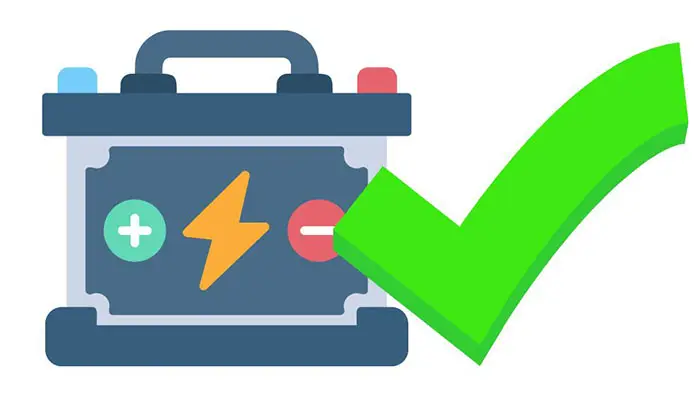
Connecting the Generator to the RV’s Electrical System
Once you have completed the necessary checks, it’s time to connect the generator to your RV’s electrical system for battery charging. Connect the appropriate cables between the generator and the RV’s electrical input or transfer switch. Ensure that the connections are tight and secure.
Double-check the wiring connections and ensure that the generator is properly grounded. Follow any specific instructions provided by the generator manufacturer or consult a professional if needed.
Now that your RV generator is connected, let’s explore the charging process and best practices to ensure optimal battery performance.
Charging Process and Best Practices
Understanding the charging process of house batteries with an RV generator and following some best practices will help you maximize the battery life and performance. Let’s explore the steps involved in the charging process and the practices you should follow.
Understanding Charging Stages
Battery charging typically involves multiple stages to ensure a thorough and safe charging process. These stages include bulk charge, absorption charge, and float charge.
During the bulk charge stage, the generator supplies maximum power to rapidly charge the battery to a certain voltage level. In the absorption charge stage, the charging voltage is reduced to prevent overcharging and allow the battery to reach full capacity. Finally, during the float charge stage, the generator maintains a lower voltage to keep the batteries topped up without overcharging.
Ensuring Proper Charging Sequence
It’s crucial to follow the correct charging sequence to avoid any potential issues. Start by ensuring that the generator is running and supplying power to the RV’s electrical system. Then, switch on the charging circuit to allow the generator’s power to flow into the house batteries.
Always make sure that the generator is providing sufficient power for both charging the batteries and running any appliances simultaneously. If you notice any power shortages or fluctuations, consider reducing the load or shutting off non-essential appliances temporarily.
Monitoring Battery Voltage and Current
While the generator is charging the house batteries, it’s important to monitor the battery voltage and current. Most RVs have a battery monitor built into the control panel that displays the battery voltage. Monitoring the voltage helps you track the charging progress and detect any potential issues, such as overcharging or undercharging.
Additionally, some generators may provide a built-in charging status indicator or display to show the charging current or status. Keep an eye on these indicators to ensure that the charging process is proceeding as expected.
Preventing Overcharging or Undercharging
Preventing overcharging or undercharging is crucial for maintaining the health and longevity of your house batteries. Overcharging can lead to excessive heat buildup, water loss, and potential damage to the battery. Undercharging, on the other hand, leads to sulfation and reduced battery capacity.
To prevent overcharging, ensure that your RV generator has a properly calibrated charging system that adjusts the charging voltage and current based on the battery’s condition. Additionally, avoid leaving the generator running for extended periods after the batteries are fully charged.
To prevent undercharging, make sure to run the generator for an adequate amount of time to allow the batteries to reach their full capacity. Avoid discharging the batteries excessively, as this can lead to sulfation and reduced battery performance.
By following these best practices, you can ensure efficient and safe charging of your house batteries with an RV generator.
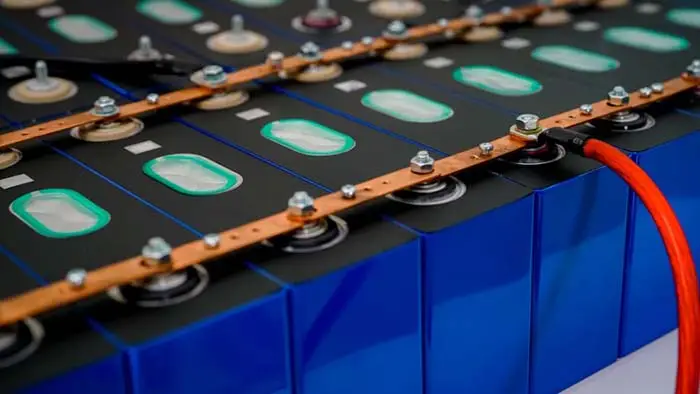
Troubleshooting Common Issues
Sometimes, you may encounter issues or face challenges while charging your house batteries with an RV generator. Let’s explore some common problems and how to troubleshoot them.
Identifying Generator or Battery Problems
If you experience issues with battery charging, it’s essential to identify whether the problem lies with the generator or the batteries. Check if the generator is running properly and supplying power to the RV’s electrical system. Ensure that the generator’s fuel and oil levels are adequate.
Inspect the batteries for any signs of damage, such as bulging, leaking, or corroded terminals. Measure the voltage of the batteries using a multimeter to verify if they are receiving a charge. If the batteries have reached the end of their lifespan or are damaged, they may need to be replaced.
Checking Generator Fuel and Oil Levels
Running out of fuel or having low oil levels can cause the generator to shut down and interrupt the battery charging process. Regularly check the fuel level in the generator’s tank and refill it as needed. Follow the manufacturer’s guidelines for selecting the appropriate fuel type for your generator.
Similarly, check the oil level in the generator’s engine and top it up if necessary. Consult the generator’s user manual for the recommended oil type and change intervals.
Inspecting Charging Connections and Wires
Loose or faulty charging connections and wires can interfere with the charging process and lead to inefficient charging or voltage losses. Regularly inspect the connections between the generator and the RV’s electrical system to ensure they are secure and free from corrosion.
If you notice any loose or damaged connectors or wiring, address them promptly. Replace any worn-out cables or connectors and ensure that the wires are properly sized for the generator’s output and the distance between the generator and the batteries.
Diagnosing Battery Health and Charging Efficiency
If you suspect issues with your house batteries’ health or charging efficiency, there are several diagnostic steps you can take. Measure the battery voltage using a multimeter during the charging process to ensure that the charging voltage is within the battery manufacturer’s recommended range.
If the voltage is consistently too high or too low, it may indicate a problem with the charging system or battery. Consult your battery manufacturer’s guidelines or consider seeking professional help to diagnose and address any underlying issues.
By troubleshooting common issues and resolving them promptly, you can ensure a smooth charging process and optimal battery performance.
Maintaining House Batteries
Proper maintenance of your house batteries is essential for their long-term performance and lifespan. Here are some maintenance tasks to include in your routine:
Regular Inspection and Cleaning
Regularly inspect your house batteries for any signs of damage, corrosion, or electrolyte leaks. Clean the battery terminals and cables using a solution of baking soda and water to remove any corrosion buildup. Ensure that the battery connections are tight and secure.
Maintaining Proper Water Levels (if applicable)
If you have lead-acid batteries that require maintenance, check the water levels regularly. Add distilled water as needed but avoid overfilling. Refer to your battery manufacturer’s guidelines for specific instructions regarding water levels and maintenance procedures.
Equalization and Conditioning
Equalization is a process that helps balance the individual cells within a battery bank and removes any sulfate buildup on the battery plates. Some battery chargers or RV converters have an equalization mode. Follow the manufacturer’s instructions to perform equalization periodically, typically once every few months.
Conditioning is another maintenance technique that involves discharging the batteries to a specific voltage and then fully recharging them. This process helps eliminate sulfation and maintain battery health. Again, consult your battery manufacturer’s guidelines or seek professional advice on how to condition your specific battery type.
Replenishing Battery Charge with the RV Generator
Regularly recharge your house batteries using the RV generator, especially if you have been relying on other power sources or have depleted the battery charge significantly. Running the generator for a sufficient amount of time will help restore the battery’s charge and ensure they are ready for your next adventure.
Now that we have covered house battery maintenance, let’s explore some alternative charging methods for RV batteries.
Alternative Charging Methods
While RV generators are a popular choice for charging house batteries, there are other options available. Here are a few alternative charging methods to consider:
Solar Panels for Battery Charging
Solar panels are a clean and renewable source of energy that can be used to charge your house batteries. Installing solar panels on your RV’s roof or in a suitable location can provide a sustainable and silent charging solution, especially when you are parked in sunny locations for extended periods. Consider the solar panel capacity and efficiency when selecting a solar charging system.
Inverter Chargers and Shore Power
Inverter chargers combine the functions of an inverter (to convert DC power to AC power) and a charger (to charge the batteries) into a single device. Inverter chargers allow you to charge your house batteries using shore power when you are connected to a campground’s electrical hookup. This method provides a continuous charge to the batteries and also powers the RV’s electrical system.
Battery Chargers for Grid or Generator Connection
Battery chargers designed specifically for grid or generator connection are another option for charging house batteries. These chargers can be connected directly to a generator or a grid power source and provide a controlled and efficient charging process. They often offer multiple charging stages and intelligent charging algorithms to ensure optimal battery health and performance.
Consider your specific needs and preferences when choosing an alternative charging method, and ensure compatibility with your RV’s electrical system.
Pros and Cons of RV Generator Charging
Let’s explore the advantages and disadvantages of using an RV generator to charge house batteries:
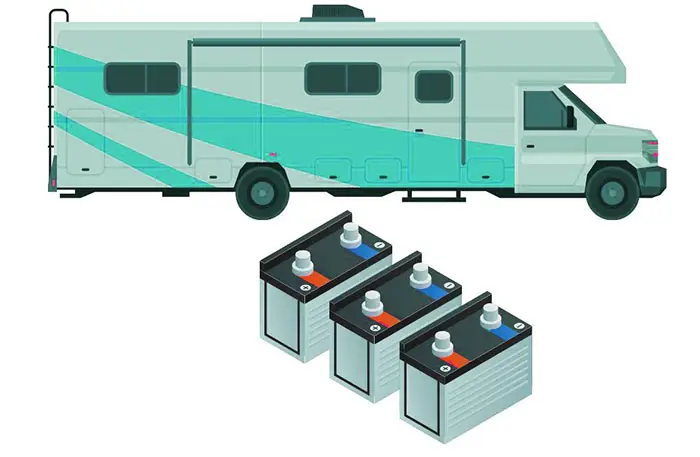
Advantages of RV Generator Charging
- Versatile power source: RV generators provide reliable power for both charging house batteries and powering other onboard systems.
- Self-sufficiency: Charging with an RV generator allows you to replenish your batteries’ charge even when you are not connected to a campground’s electrical hookup, providing freedom and flexibility while camping.
- Maintenance and conditioning: Running the generator regularly for battery charging helps maintain battery health, extend battery life, and prevent sulfation.
Disadvantages and Limitations
- Fuel consumption: RV generators consume fuel while running, which can add to the overall cost of operation.
- Noise and emissions: Generators generate noise and exhaust emissions, which may not be desirable in certain camping environments or during quiet hours.
- Limited power output: Generator capacity and output may limit the number and types of appliances you can run simultaneously while charging the batteries.
Considerations for Long-Term Off-Grid Living
If you plan to live off-grid or spend extended periods away from hookups, it’s essential to carefully consider your power needs and battery capacity. Investing in a high-capacity RV generator, larger battery banks, and alternative charging methods, like solar panels, can provide a more sustainable and self-sufficient power solution.
Conclusion
RV generators can indeed charge house batteries and provide a reliable power source for your RV’s electrical needs. By understanding the factors affecting RV generator charging, choosing the right generator, setting it up correctly, and following best practices, you can ensure efficient charging and optimal battery performance.
Regular maintenance and inspection of house batteries, along with alternative charging methods, such as solar panels and inverter chargers, offer additional versatility and reliability. Assess your specific power requirements, consider the pros and cons of different charging options, and choose a charging method that aligns with your RV lifestyle.
With a well-maintained RV generator and properly charged house batteries, you can embark on your RV adventures with peace of mind, knowing that you have a reliable source of power wherever your journey takes you.
Hope this was helpful, and thanks for reading.
Cheers!


